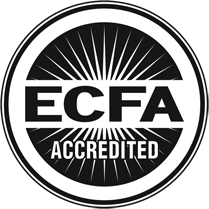Discover the History of Black Missionaries
“And why have I never heard this before?!” a woman blurted out in the middle of a teaching by Encompass mobilizer, Mike McKeever.
Clinton Grace Brethren Church (CGBC) in Clinton, Maryland had expressed interest in learning more about missions history, so Mike was teaching on “a complete history of missions” at one of their adult Sunday school classes.
Another parishioner responded to the woman’s interjection by saying, “Well, I’ll tell you why!” which led to a fascinating and heartfelt discussion.
What had gotten this Sunday school class so riled up?
CGBC has been a huge proponent of missions for a long time, and their senior pastor, Irv Clark, even serves on Encompass’s board of directors. Mike began his missions history lesson with Abraham and taught all the way through history to what Revelation says about missions. He included missionaries in scripture as well as notable figures throughout missions history like St. Patrick, The Moravians, Hudson Taylor, and William Carey. What surprised the group so much was the number of notable black missionaries who were also included.
CGBC is approximately 50% white and 50% black in attendance, since it was formed by the merging of two churches in the year 2000.
One of the notable figures Mike talked about was John Marrant (1755-1791), a free black man from New York City who became a believer under George Whitfield’s ministry. John became one of America’s first black preachers and also became a missionary to Native Americans in the US and Canada.
George Liele was another. He became a believer as an enslaved person in 1773, and after being freed by his master in 1778, he became the first missionary from America to go to Jamaica.
Notable among black female missionaries was Susan Angeline Collins. She was born in 1851 as the daughter of an indentured servant. She was single, but worked hard to build a laundry business, which she later sold to establish a girl’s boarding school in Angola, Africa in the early 1900’s. She served as a missionary in Africa until she was 68, and she was completely self-funded.
Louise Celia Fleming was born into slavery in January of 1862 in Florida on the Hibernia Plantation. Her master, Colonel Michael Fleming, took his slaves to Bethel Baptist Church with his family. Louise received a formal education, and after graduating, she served as a missionary teacher in Congo.
The Sunday school lesson ended with a challenge. On September 4, 1900, Jacob Cassel polarized the delegates of the Grace Brethren Church national conference when he asked, “Are we ready to enter the foreign mission field?” Mike posed a similar question when he asked the class, “Are you ready to enter it also?”
To learn more about historical and modern-day African American missionaries, check out the free PDF, “Legacy,” which is published by the National African American Missions Council. They partner with other sending organizations that Encompass also works with, such as Missio Nexus and Sixteen: Fifteen. Their vision is to see African Americans and multi-ethnic churches mobilized for global missions.



